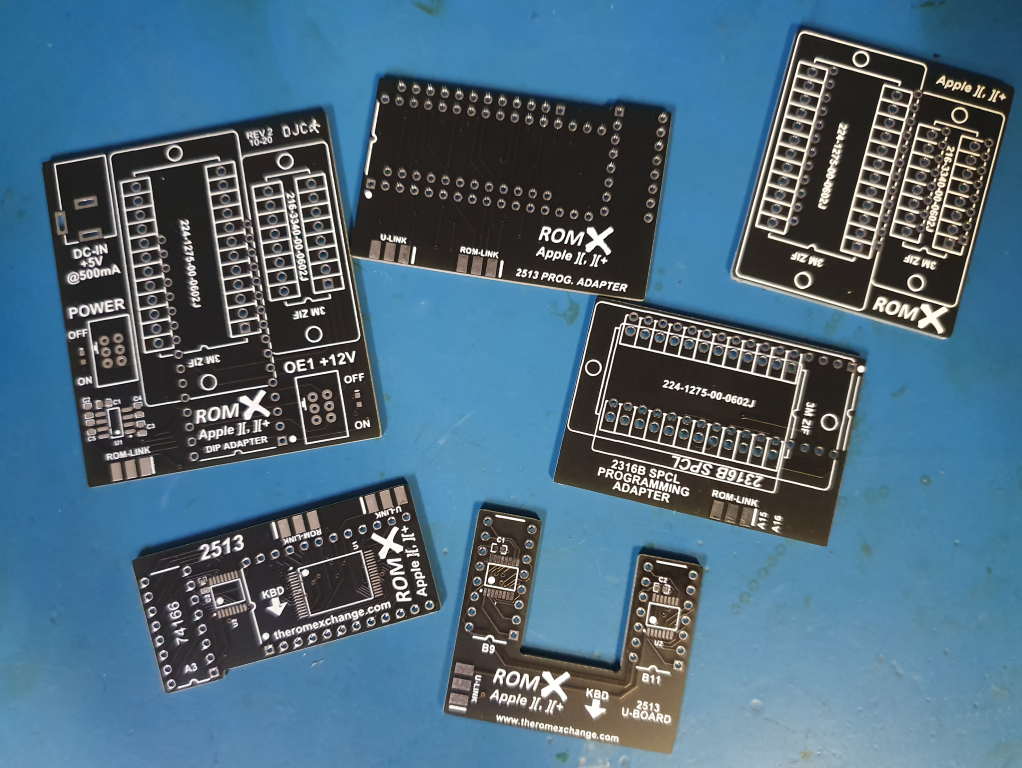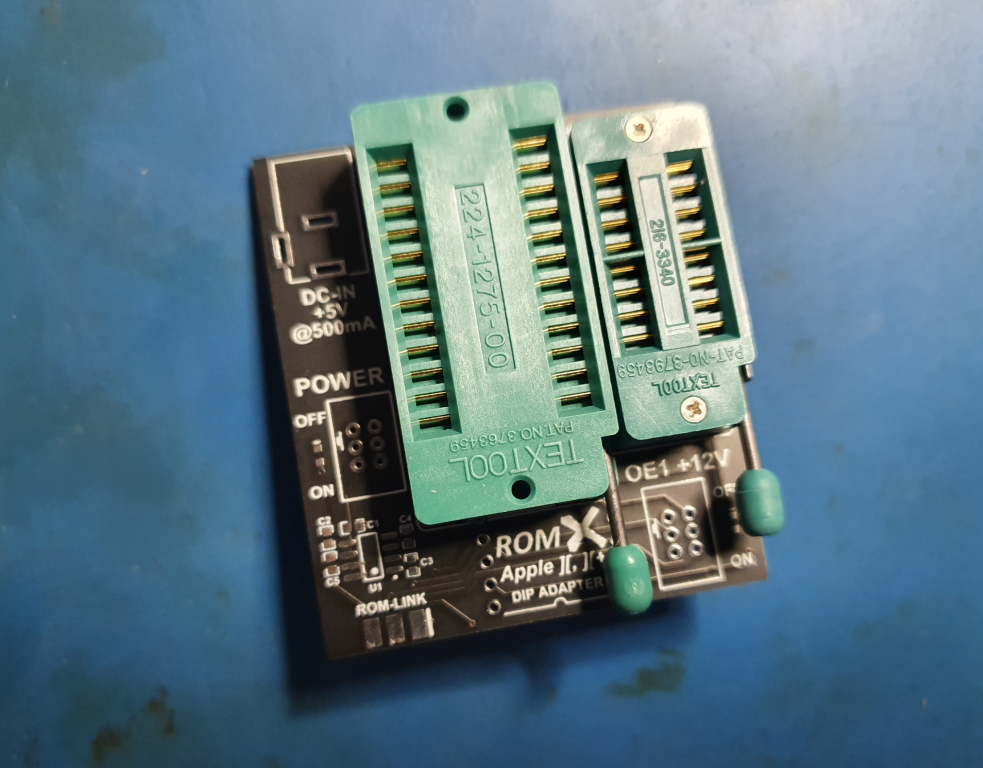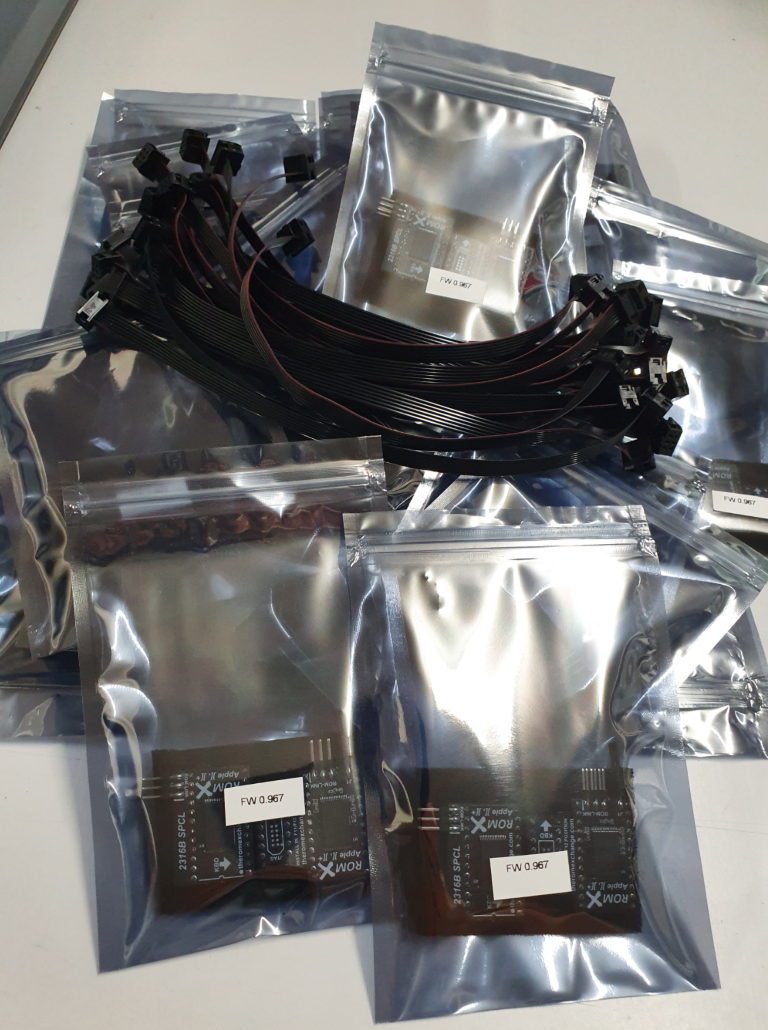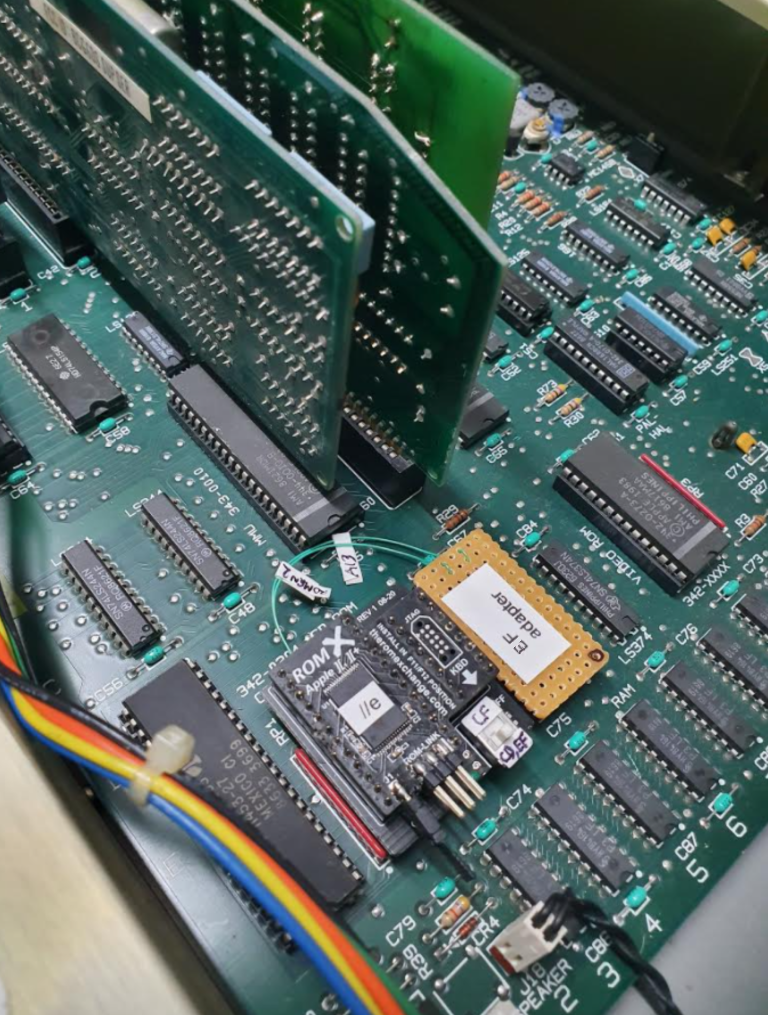7th November 2020
Wow - November already - time flies! Both Jeff and myself have been pretty busy. Jeff's been working away on the software side, edging ever nearer to the 1.0 release of the firmware. V0.990 is currently being tested internally - looking really good. This version includes the capability to upload ROM images from disk, direct from the firmware. No need to boot to DOS! Its pretty neat and is a bit of a game changer for the upload process. There will rarely be a case where you would need to use the disk based version of the software.
I received a bunch of PCB's a couple of weeks ago, including the prototype 2513 Text ROM board set.

Amongst the PCBs are a number of reworked programming adapters that incude footprints for ZIF sockets - this will make it a little quicker to insert/remove boards during programming.

I haven't had a chance to assemble and test any of them yet as I've run out of pin headers while building the latest batch of ROMX!

A large number of headers have been ordered though, and should arrive soon. I ended up using leadframe pins to prototype the ROMX //e however it reinforced my original opinion on leadframe pins - they are very easy to bend versus the (socket safe) headers that we've been using to date.
Speaking of the //e version of ROMX, I cobbled together a set of adapters that allowed me to use the Apple II plus version of ROMX to get the basics working for the //e. The EF ROM adapter board will be optional, required for those with earlier //e's that have the CD and EF ROMs on board like the one I'm testing with. For machines with just a single CF ROM (Extended keyboard IIe, IIc, etc) the EF adapter will not be required. Perhaps we'll still include it in the kit just in case you want to move ROMX to another machine with dual sockets though.

On the //e, switching ROM's from the menu is currently working, and we are beginning to work on the flash write functionality - Jeff's reworking the firmware while I update the CPLD code to match. Using just the ROM sockets we dont have quite the same number of bus signals available to us as we did with the II plus, but we're pretty confident we can get it to work without having to tap into the CPU or MMU socket. I'll be working on laying out some prototype PCB's over the next week or so, including the text ROM for the //e. Oh - it will likely include a real time clock onboard as well.
Jeff's also been looking into Senior PROM support for ROMX //e, including the NMI functionality. We're hoping to be able to support Senior PROM as a ROM image that you can install.
Exciting news coming very soon in regard to distribution of ROMX too - stay tuned!
